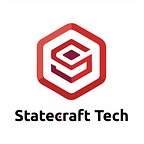How blockchain is streamlining settlements between telecom companies
KPMG is working with TOMIA, Microsoft and R3 to create a near real-time settlement network for telecom companies.
【 Published by kpmg | Editor: Arun Ghosh 】
The future of connectivity is changing with growing individual data usage and the promise of 5G wireless networks. From enabling more intelligent manufacturing to allowing consumers to stream content faster, we are on the cusp of the most advanced connective experience yet.
While we will be able to consume more data more quickly and across more locations than ever before in this next wave of telecom advancement, it is becoming increasingly complex for telecom companies to track and settle interchange fees. In fact, international mobile data roaming revenues are expected to reach $31 billion in 2022, with an average annual growth rate of eight percent. However, closing the financial gap associated with increased data usage across continents ultimately rests on the consumer’s shoulders.
Blockchain as a solution
The cross-border and cross-network settlement challenges among telecom organizations that exist today — which we anticipate will multiply with 5G and resulting increased data exchanges — are a consequence of the highly complex network of transactions that exist in the industry, as well as dynamic, constantly changing contractual information.
Every day, billions of mobile interactions flow through hundreds of connected networks managed by dozens of customers and suppliers. Currently, telecom companies are navigating this tangled web of processes and systems to manage settlements manually, and in many cases, outsourcing the reconciliation process.
One way to combat the complexity associated with managing the future of connectivity is with blockchain. With roots grounded in transparency, blockchain has the potential to proactively combat rising costs to consumers resulting from cross-border settlements, and with 5G, ensure that international roaming and cross-border cell phone networks are interoperable and efficient.
That’s why KPMG is working with TOMIA, Microsoft and R3 to develop a blockchain solution that is intended to streamline the transactional process from a multi-week to multi-day process by saving time on settlement and dispute management, increase transparency, and prevent hefty costs trickling down to consumers — making the anticipated 5G switch and the resulting processes as smooth as possible.
How it works
Blockchain offers a central management system for critical business information like agreement details, supplier and customer information, and tariff and partner settlement information. It can enable telecom companies to more efficiently manage contracts and financial reconciliations. Instead of a monthly basis, blockchain can manage this daily — creating a near real-time payment system. The automation and efficiency characteristics of a blockchain will allow for reduced outsourcing, and in turn, reduced costs associated with the settlement process.
Developing smart contracts that include the right rates, destination and bilateral deal information will ensure a significant drop in disputes between carriers and mobile operators. The blockchain can also build in invoice reconciliation solutions that address rate and amount disputes.
The intended result
Fewer settlement disputes, lower costs for carriers, and more intuitive processes can be anticipated. And, as 5G emerges, better preparedness to support exponentially rising data usage along with the increase of distributed data across hotspots and networks. The automation and efficiency characteristics of blockchain will reduce the need to outsource manual processes, and in turn, reduce costs associated with the settlement process. Blockchain, ultimately, can proactively combat the increased expenses that would otherwise fall on the consumer to cover.
Implementing a blockchain solution offers a first-mover competitive advantage that will help telecom companies keep data connectivity accessible and affordable for consumers, and offers the necessary efficiency and transparency for improved cross-network settlements in the industry.
We are thrilled to be working with other leaders in this industry to deliver this solution, and are actively exploring additional blockchain solutions to support telecom enterprises with the emergence of 5G, such as protecting consumer information and improving industrial automation with the Internet of Things. We look forward to sharing new blockchain use cases in the months to come.
■ Source: kpmg
■ Note: Please specify the source or references of the article for reproduced.
■ Solemn declaration: We reproduced articles and news for purpose of sharing information. Copyright belongs to the original author. If there is any infringement/error, please contact us as soon as possible, modify or delete action will be implemented immediately. Content analysis is for information purposes only and does not constitute any investment advice.
■ View Disclaimer: the views, thoughts, and opinions expressed in the text belong solely to the author, and not necessarily to the author’s employer, organization, committee or other group or individual.
■ Please visit our site: Statecraft for more information and the latest news update.
■ Follow Us 👉 Instagram| Facebook | Telegram | Twitter | Youtube | Linkedin | Line@
■ Customer Service:contact@ktrade.email
■ Business Contact:jingluntech@gmail.com
